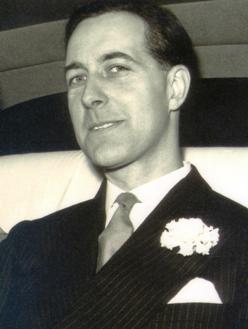
Former Society Assistant Secretary and Editor
Bruce Wilcock, a long-standing Fellow and former Assistant Secretary and Editor of the Society, died peacefully in his sleep following scoliosis on 2 August 2011, aged 83.
Bruce was born on 26 November 1927 and as a schoolboy (early in WW2) returned from evacuation eventually to join the SE London Emergency Secondary School in Lewisham, London. There he came under the influence of one of the teachers Dr H A Baker DSc, a former Government Geologist to Newfoundland. On leaving school and after industrial experience he proceeded to read Geology at Chelsea Polytechnic (as it then was), graduating with a BSc (Hons) London, with ancillary Chemistry and Physics, in 1953.
As a senior student, he was elected a Fellow of the Society on 26 November 1952, his application signed by W F Fleet, (Head of Department ) , W E Smith and Judith Cohen, all staff at Chelsea. He had an interest in cartography and design and worked first as an Information Scientist at the British Iron and Steel Research Association (BISRA) headquarters.
Pending the retirement on 30 April 1961 of Arthur Greig, in post for many years, Wilcock was appointed Assistant Secretary and Editor (Designate) on 13 February 1961, taking up full office (now styled ‘Executive Secretary’) on 1 May 1961. Under the then rules, he had to relinquish his Fellowship, regaining it on leaving the Society's employ. While in post Bruce served under Presidents S E Hollngworth, O M B Bulman and F W Shotton; Secretaries J M Edmonds, P A Sabine and W B Harland; Treasurers P Evans and W Bullerwell; and Foreign Secretaries O T Jones and O M B Bulman. (In those days Secretaries, two in number, overlapped for a few sessions to ensure continuity).
Bruce was of course closely involved with all aspects of the Society’s administration; but throughout his period in post many developments took place, some of which would come to fruition after he had left. In all of these he worked closely with the Officers and with the numerous standing committees (about 10 in number) that reported to Council, and frequently played a dominant role. He commented on some aspects of these activities in recent years in Geoscientist, and in a fuller paper in the
History of Geology Group Newsletter.
Major new matters during this time were the expansion of the accommodation in Burlington House following the departure of the Royal Society, the institution of a preliminary ‘straw poll’ for Council, the first Society meetings outside London, the establishment of the Volcanic Studies Group, and especially the Engineering Group, which had an important effect upon the scope, expansion and finances of the Society, and the publication of the ‘
Phanerozoic Time Scale’ - a prototype for the Special Publications series.
The far-sightedness of the Society in setting up the Engineering and other specialist groups was especially praised by R Glossop in his comprehensive foreword to the 25th anniversary publication of the
Quarterly Journal of Engineering Geology.
Bruce resigned in May 1966 to join the Clarendon Press (Oxford University Press) as editor for sciences in Oxford. The form to confirm his re-election as a Fellow of the Society on 12 October 1966 was signed by W B Harland, W Bullerwell, J Sutton, P A Sabine (all officers), J A Farnaby and A Greig. He was later elected to the Society Club.
In retirement he was much concerned with the ‘
Oxford Companion to the Earth’ (OUP, 2000) and also with the Oxford University Press series on the
Birds of the Western Palaearctic.
Bruce was a man of charming presence who had a delightful sense of humour, as evidenced by his contribution to the
History of Geology at Chelsea (Blundell 2005). He leaves the Geological Society very much in his debt. Bruce is survived by his widow Anne, a son and three grandchildren.
By Peter Sabine, with thanks to Anne Wilcock, Professor Derek Blundell and Wendy Cawthorne
.